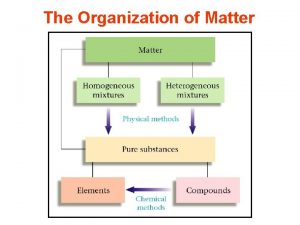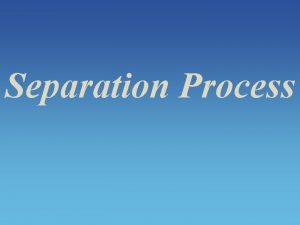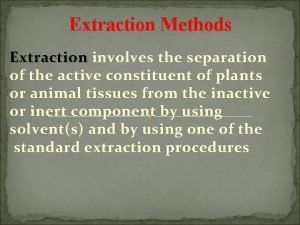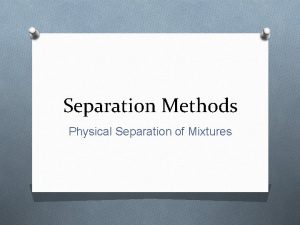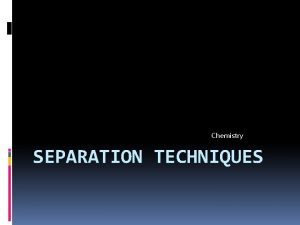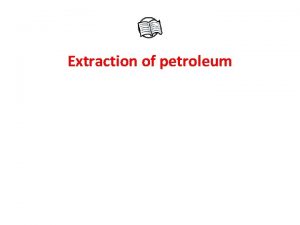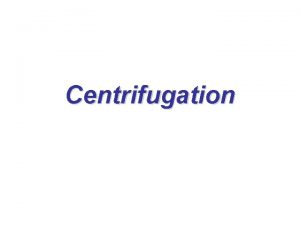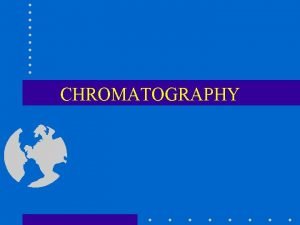Extraction Methods Extraction involves the separation of the












- Slides: 12

Extraction Methods Extraction involves the separation of the active constituent of plants or animal tissues from the inactive or inert component by using solvent(s) and by using one of the standard extraction procedures

: Non-continuous hot method Ex. infusion & decoction Hot methods. Extraction Methods can be divided into Continuous hot method Ex. Reflux & Soxhlet Cold methods

Cold methods 1 -Maceration Which include soaking of plant material with the solvent until penetration of cellular structures and the active constituent dissolved in the solvent? The procedure include placing the plant material in a container and adding the solvent, cover the container and leave it for a time which differ from 2 -4 days. the procedure carried out at room temperature (15 -25). the procedure may be repeated many times and the solvent obtained then mixed together.

The solvent used in extraction is usually depend on the active constituent e. g. alkaloids and glycosides, by using alcohol and water in different proportion. Water is used because if the alkaloids present in a salt form, they will dissolve in water Non-polar solvent like chloroform are used for the extraction of volatile oil Advantages: 1 - Can be used for heat sensitive substances. 2 - Easy and cheap. Disadvantages: 1 - Take along time. 2 - Non efficient. 3 - Extract small quantities.

Hot methods 1 - Infusion In this method we have special container called infusion pot. This method also used for the extraction of volatile oil. The procedure involve placing the plant material in the infusion pot then we add the solvent which is boiling water and cover with heavy lid, after the addition of the solvent, left for the extraction of active constituent during that time the volatile oil evaporated with steam and condenses on the lid after that we take the solvent which contain the active constituent.

Decoction In this method we place the powdered plant material in a container then add the solvent and place the container on the source of heat or direct flame until the active constituent will be dissolve in the solvent. This method is usually used for hard plant material like barks, stems and roots. Here the solvent used depend on the active constituent and source of heat e. g. chloroform and ether can't be used because we use a direct source of heat. In addition to that the active constituent should be heat stable

. Continuous hot extraction methods Ordinary reflux condenser. We place the plant material in round bottom flask with solvent and the round bottom flask is surrounded by a source of heat. The round bottom flask is attached to a condenser. We start to heat the flask and when the solvent reach its boiling point it will evaporate to the condenser were it condenses a return back to the flask.

Advantages: 1 - Small amount of solvent is used. 2 - Used for toxic reagent, which can not be used in open-air system? 3 - Continuous extraction method (good extraction)

Soxhlet apparatus Soxhlet consist of a round bottom flask, extracting chamber, condenser, and a thimble containing the powder plant material. When a solvent starts to boil it will evaporate to the condenser and dropped down to a porous paper (thimble )which contain the plant material, the solvent then will extract some of the active constituent and then it will go back to the round bottom flask through a siphon tube.

: Advantages 1 - We use a small amount of solvent 2 - It is a closed apparatus so that it is used for dangerous organic solvents. 3 - It can be used for the extraction of different active constituent by changing the polarity of the solvent. 4 - It can be used for the extraction of active constituent decomposed by direct heat.

A comparison between ordinary reflux and Soxhlet Reflux Soxhlet Consisting from round bottom flask directly connected to a condenser. Consisting from round bottom flask connected with extracting chamber containing thimble and the extracting chamber connected to a condenser. The plant material is placed together with the solvent in the round bottom flask. The plant material is placed in the thimble separated from the solvent The plant material is directly exposed to the heat The plant material is not directly exposed to heat The extract requires filtration The extract not requires filtration

Distillation In this method we use a special apparatus which is called Clevenger it is used mainly for the extraction of volatile compound, e. g. orange peels has been used for the extraction of orange oil. and clove has been used for the extraction of clove oil.

